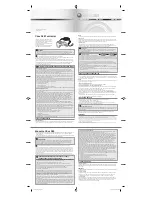
4 – 22
Remote Operation
SCAN 10,25,100
This example sets the output current to 50 mA, and then initiates a
25–step scan in 10 mA steps up to 300 mA, pausing 100 ms at each
setting. The entire scan will take 2.5 s.
Sync delay for scans
SYND(?)
{
h
}
Set (query) the sync-pulse delay for multi-step scans
{
to
h
}
, in ms.
The minimum value for
h
is 5.
The analog circuit for setting the output has a one-pole low-pass
filter with a settling time-constant of
τ
∼
2
.
5 ms for CC mode, and
τ
∼
5 ms for CP mode. When programming a multi-step scan, the
user can choose how much settling time to allow after each setpoint
step before the LDC500 generates the output sync pulse (on the rear-
panel “SYNC OUT” connector).
To estimate the settling time required for a particular application,
consider the step size
Δ
and the required tolerance
δ
. For
δ
Δ
, this
requirement is given by
δ <
Δ
e
−
h
/τ
where
h
is the
SYND
delay value. This can be rearranged to give
h
>
−
τ
ln
δ
Δ
For example, if a scan will have 10 mA steps (CC mode), and the
current must be stabilized to 10
μ
A before triggering an external
measurement, then
h
>
17
.
3 ms.
This flexibility allows users to best optimize the tolerance and
throughput trade-o
ff
s when configuring multi-point scans.
SYND 18
Example:
4.5.6
Laser monitor commands
Laser Diode Current Reading
RILD?
Query the output current reading to the laser diode, in mA.
RILD?
always returns the excitation current flowing to the laser
diode, independent of control mode (CC or CP). The actual current,
as measured by
RILD?
, may be di
ff
erent than the current setpoint
SILD
if there is an input connected to the analog modulate connec-
tor.
Front panel:
LD :
(*
.
LDC500 Series Laser Diode Controllers
















































